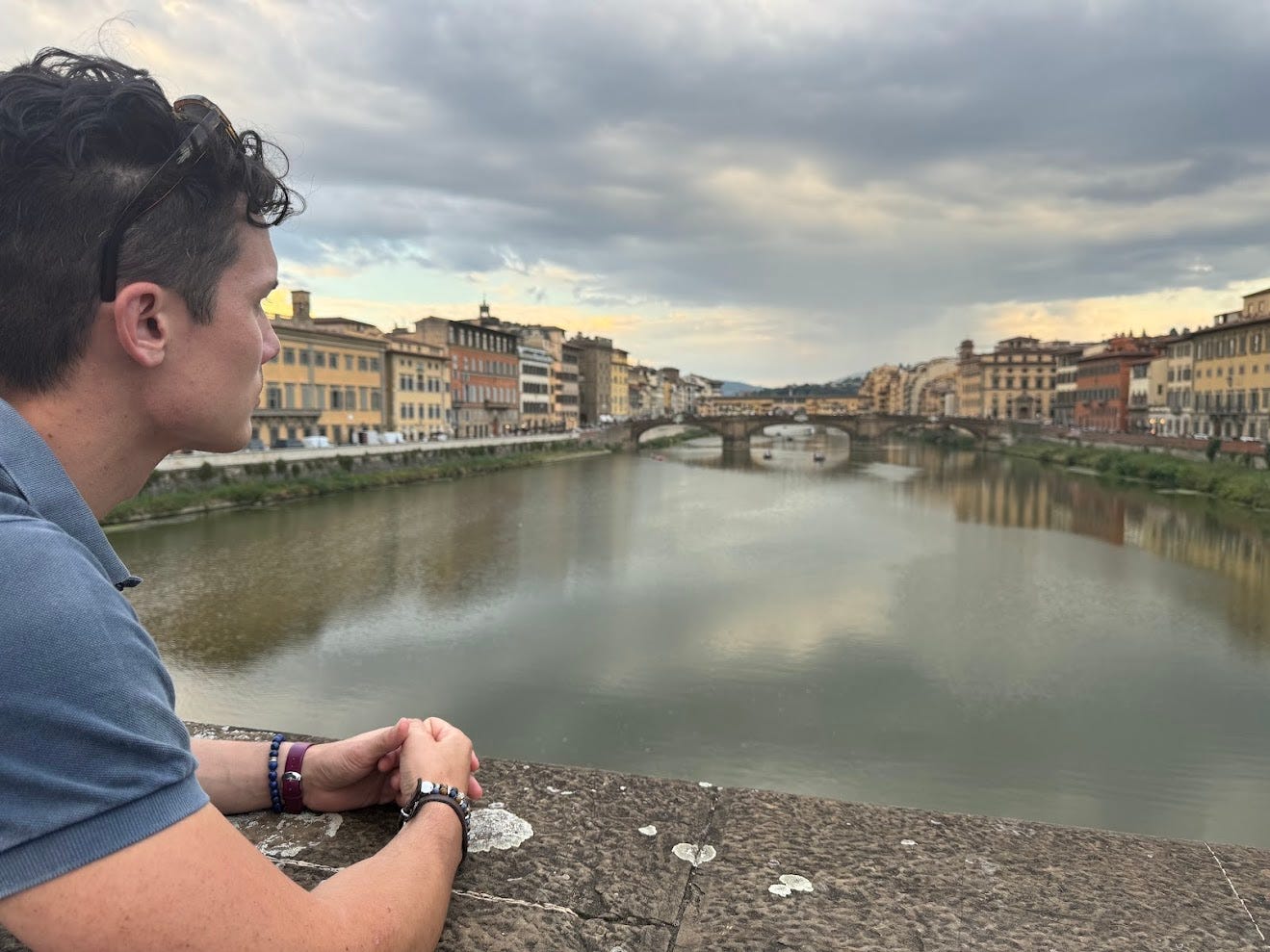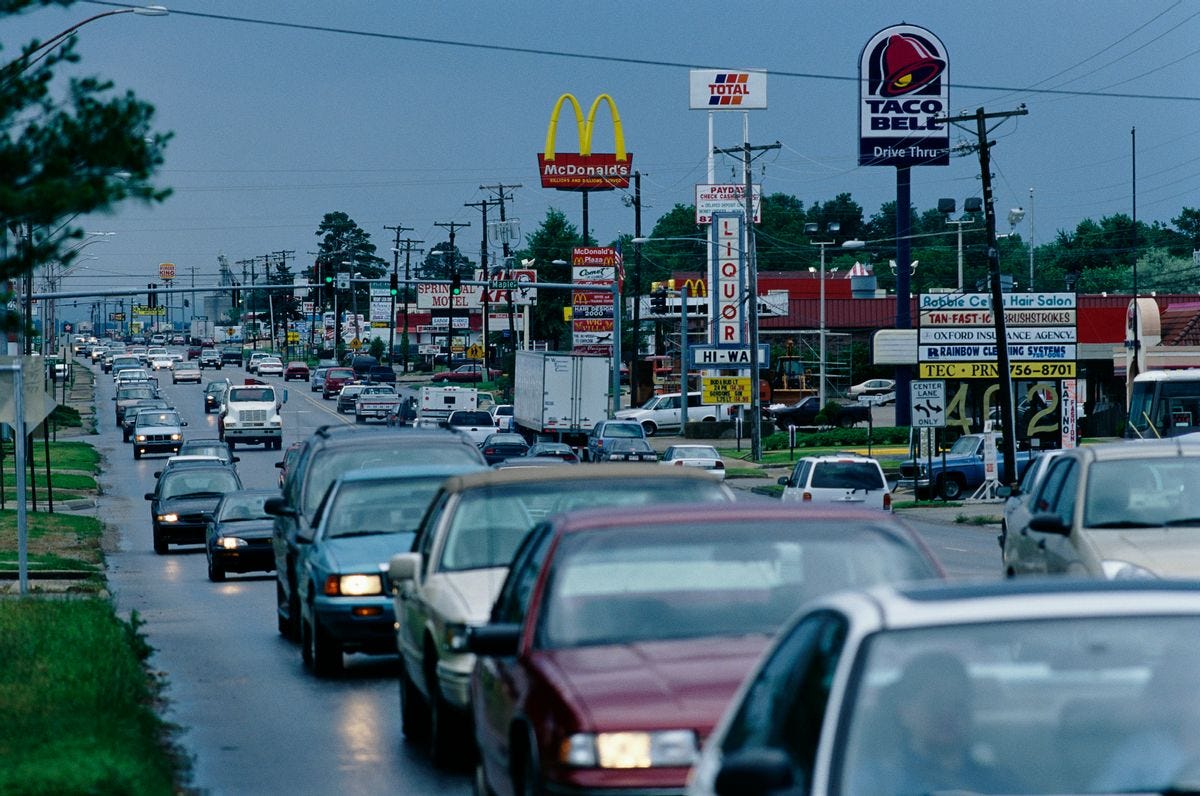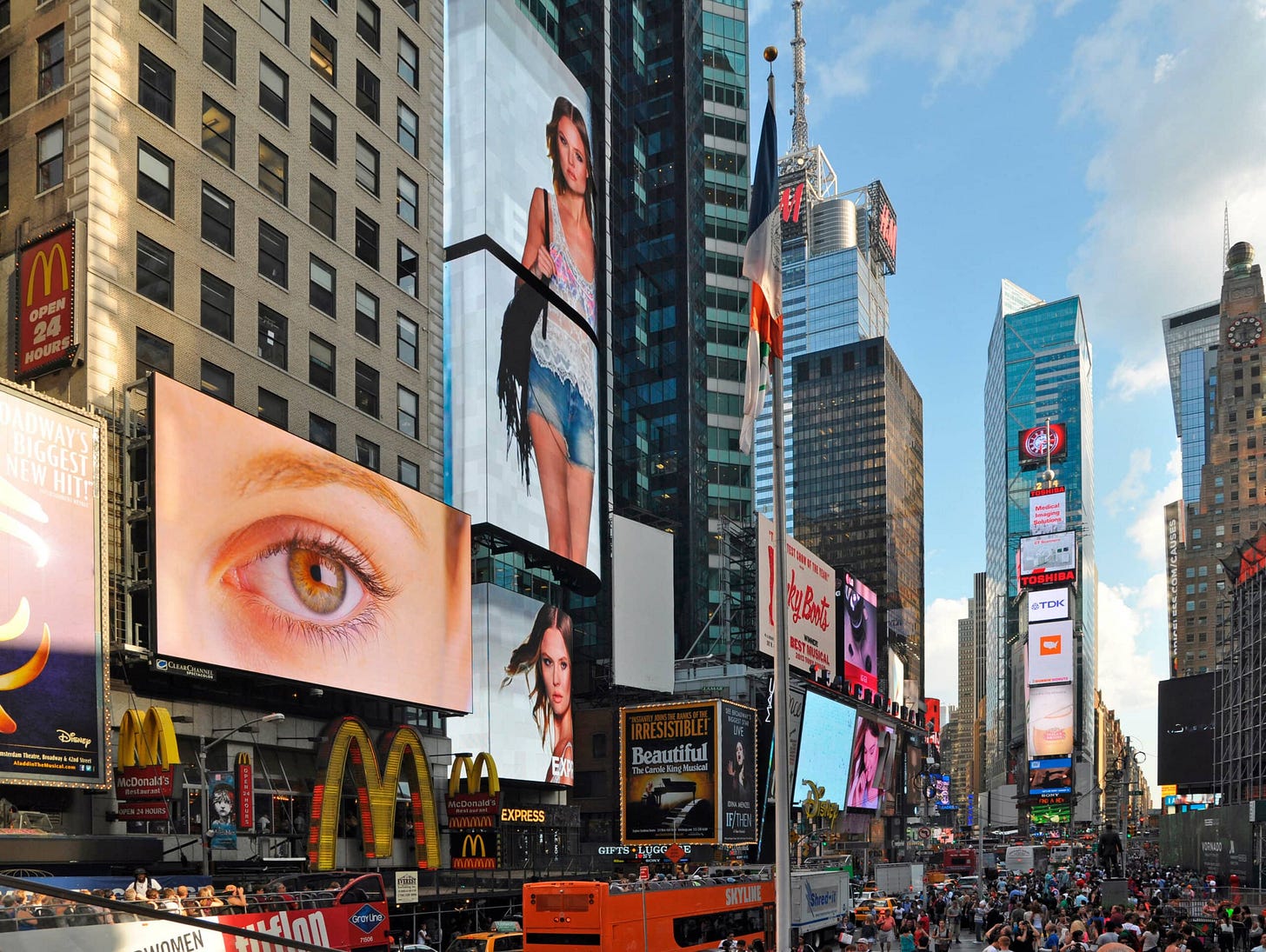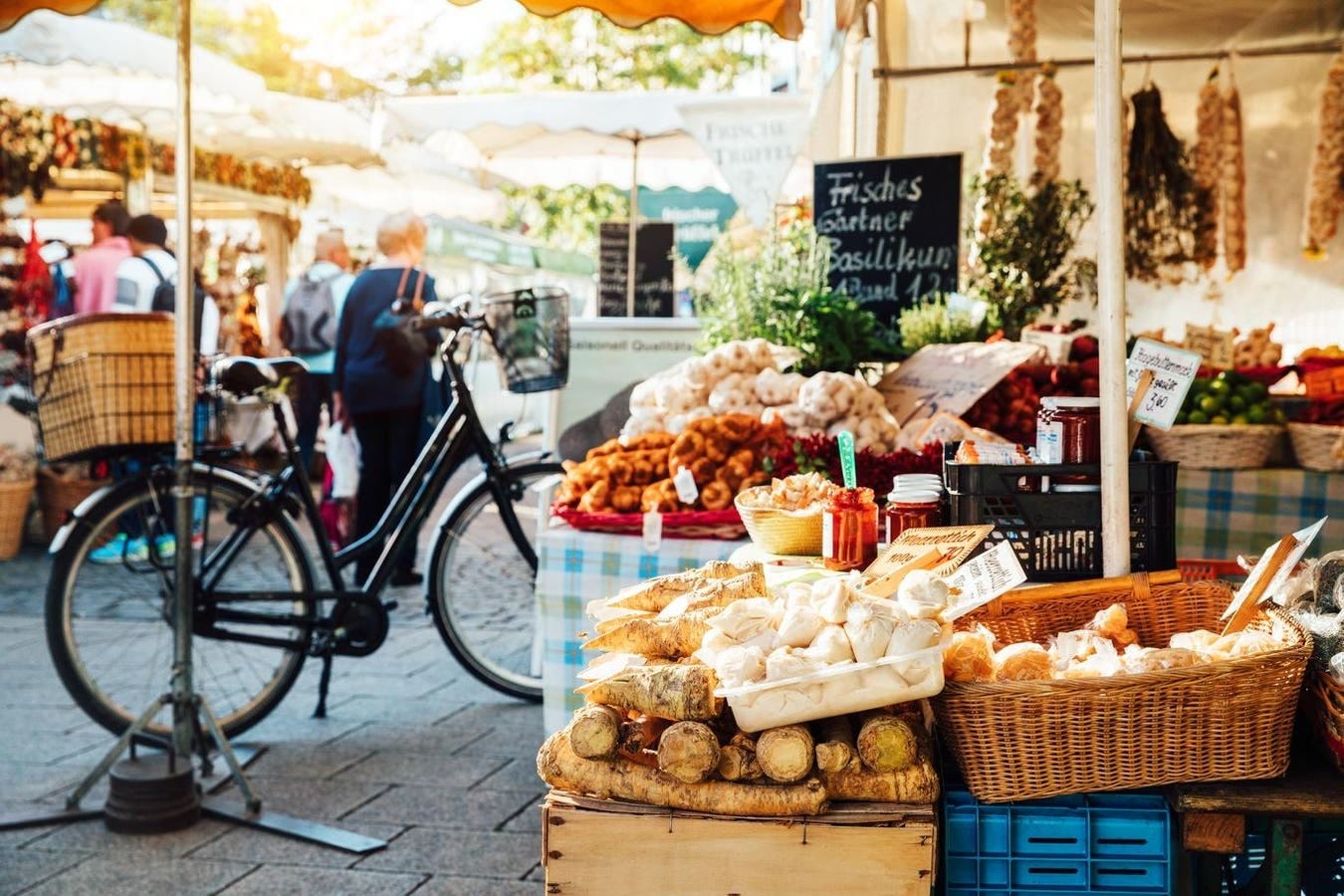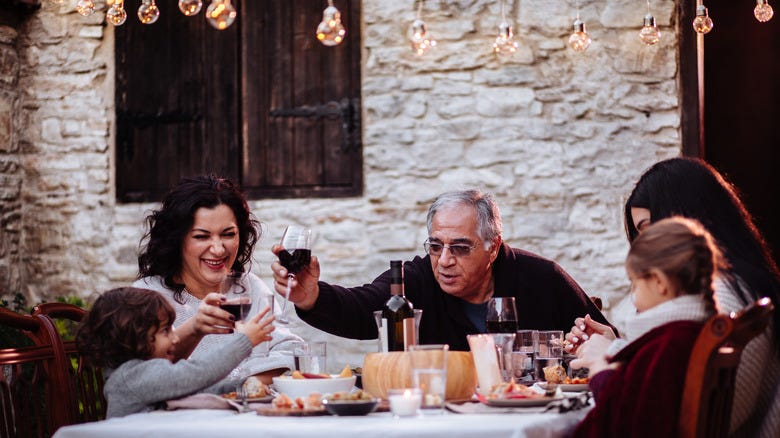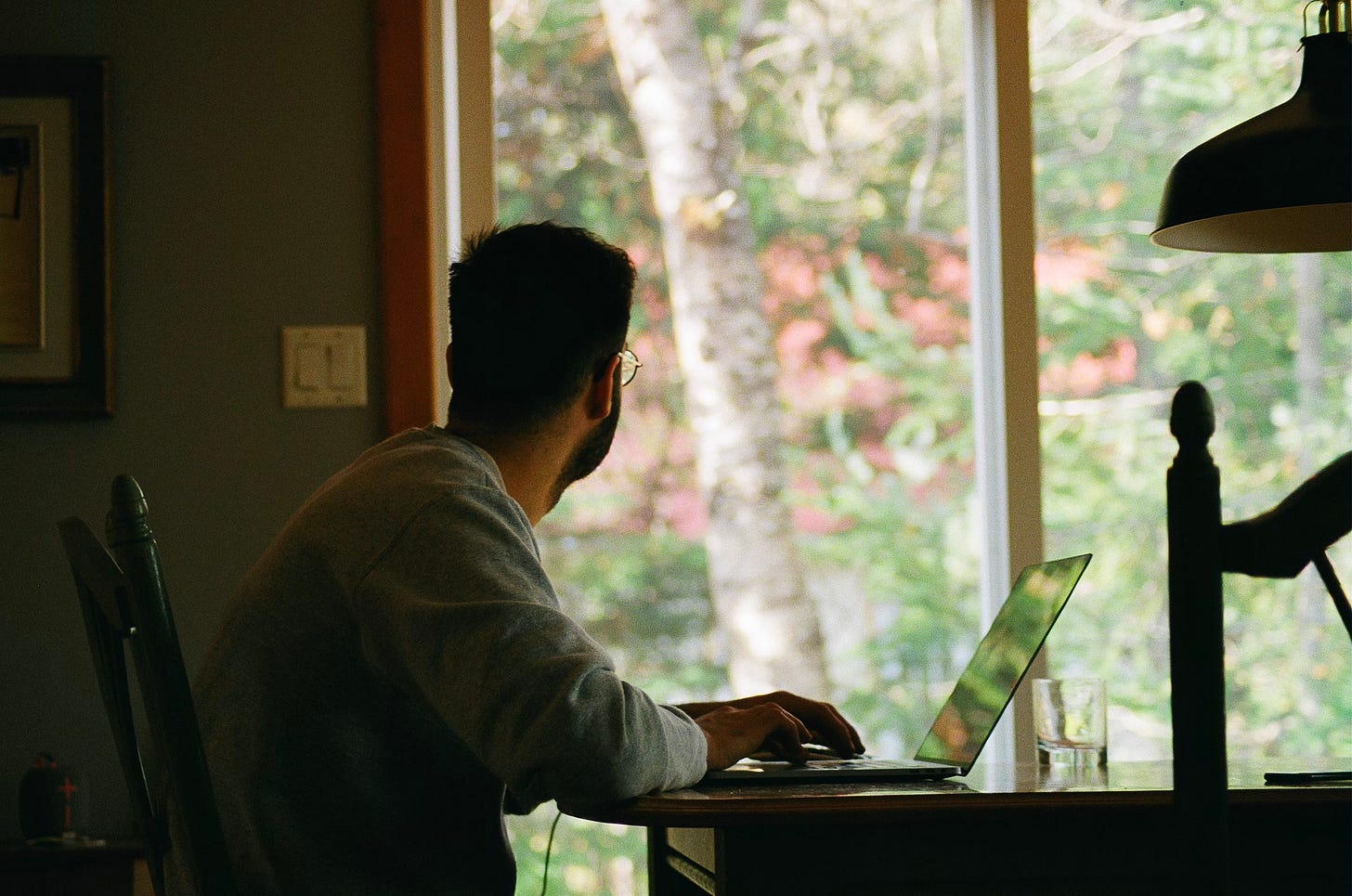Do Aesthetics Matter?
Reclaiming Beauty in the 21st Century - Insights from traveling to 60+ countries.
Some thoughts after spending time abroad….
Drive through any American city and the visual assault begins immediately.
Mile after mile of asphalt arteries lined with identical strip malls, their parking lots scattered with trash that dances in the wake of oversized SUVs.
Neon signs scream from every corner—McDonald's golden arches, Subway's sterile green, CVS's clinical red—a corporate monoculture that has colonized our landscape.
This is the daily visual diet of most Americans:
highways carved through communities like scars,
billboards towering over neighborhoods like digital overlords,
and an endless procession of cookie-cutter fast food temples serving processed food in fluorescent-lit boxes.
We've built a country that treats beauty as a luxury rather than a necessity, aesthetics as frivolous rather than fundamental to human wellbeing.
The assault doesn't end when we arrive at work.
Most Americans spend their days under the harsh glare of fluorescent tubes, in offices painted in soul-numbing beige, surrounded by gray cubicle walls and industrial carpeting. “
The message is clear: this is a place for productivity, not humanity.
Form follows function, and the function is to extract maximum output while minimizing cost.
These spaces reflect a deeper philosophy—that human beings are economic units first, aesthetic creatures second. The workplace becomes a machine designed to produce rather than inspire, to extract rather than nourish.
We wonder why mental health struggles plague office workers, why creativity feels stunted, why Monday mornings fill workers with dread (and have the highest incidence of heart attacks).
Escape to the suburbs, and the aesthetic poverty simply changes costume.
Endless developments of vinyl-sided houses, each a slight variation on the same theme, spread across former farmland like a rash. Streets designed only for cars wind through neighborhoods where walking feels like trespassing, where community spaces are afterthoughts, where the only gathering places are shopping centers and chain restaurants.
The suburban dream promised freedom and space, but delivered isolation and monotony. Children grow up in cul-de-sacs designed by traffic engineers rather than community builders, learning that public life happens in cars and private life happens behind closed doors.
We've been sold a bill of goods that equates happiness with accumulation.
The bigger house, the luxury car, the prestigious neighborhood, the corner office in the glass tower—these become the metrics by which we measure a life well-lived.
But this pursuit often leads us further from beauty, deeper into debt, more chained to jobs we hate, and isolated from genuine community.
The aesthetic life offers a different path:
quality over quantity;
beauty over status;
connection over consumption.
It recognizes that humans are not merely economic actors but creatures who need beauty, wonder, and meaningful social connection to thrive.
Some of you may argue: this is just how things are, wishful thinking will not change the reality of what daily life is.
Having traveled through 60+ countries, I've witnessed a plethora of alternatives.
In European cities, public squares serve as living rooms for entire communities. Architecture spans centuries, creating layers of beauty and meaning that accumulate over generations. People walk streets designed for human interaction, not just automotive efficiency.
In Latin American towns, vibrant murals transform ordinary walls into canvases of community expression. Markets buzz with color, texture, and authentic human connection. Even modest neighborhoods invest in beauty—a painted doorway, a carefully tended garden, a plaza where generations gather.
These places understand something we've forgotten: aesthetics aren't luxury—they're infrastructure for human flourishing.
Why has America embraced such aesthetic poverty?
The answer lies partly in the forces that shape our built environment.
Governments and corporations benefit from a population focused on production and consumption rather than reflection and community building.
Beautiful public spaces encourage lingering, contemplation, social connection—activities that don't directly generate GDP.
The "work horse" mentality serves economic interests that prioritize short-term profits over long-term human wellbeing. Ugly environments keep us moving, consuming, working—never quite satisfied, always seeking the next purchase, the next promotion, the next escape.
Reclaiming the Aesthetic Life
But younger generations are beginning to reject this bargain.
They're choosing experiences over possessions, community over career advancement, beauty over bottom lines.
They're recognizing that designing an aesthetic life isn't about privilege or pretension—it's about mental health, community connection, and human dignity.
The aesthetic life might mean choosing radical alternatives to the American model.
It could involve slow traveling through cultures that prioritize beauty and community over pure economic output—spending months in a Spanish hill town where every street corner has been crafted over centuries, or in a Colombian village where murals tell stories and plazas remain the heart of social life.
These places, often dismissed as "less developed" by GDP metrics, offer profound lessons in what development actually means for human flourishing.
For some, it means making an even bolder choice: relocating entirely.
This is the path I chose to embark on since 2017.
I moved to Panama, where tropical abundance meets Spanish colonial architecture, where markets overflow with color and life moves at human rather than corporate speed.
I’ve also spent significant time in places like Florence, Italy, where Renaissance masters still whisper from every facade, where beauty isn't a luxury but a civic responsibility.
In Zurich, discovering how prosperity and aesthetics can coexist when societies prioritize public beauty alongside private wealth.
Exploring parts of Iberia (the subcontinent composed of the nations of Spain and Portugal) where ancient stones tell stories and modern life unfolds in spaces designed for human connection rather than automotive efficiency.
Spending time in other countries is not only leisure, but explorations of alternative realities.
Places where the aesthetic life is a longstanding tradition, where beauty isn't rationed but abundant, where community isn't commodified but organic.
The aesthetic life might also mean staying in your home city and making small, but meaningful changes:
Choosing a smaller apartment in a walkable neighborhood over a larger house in a car-dependent suburb
Supporting local businesses that contribute to community character rather than chain stores that homogenize it
Investing in public spaces and community art rather than private luxury
Designing work environments that inspire rather than extract
Creating daily rhythms that include beauty, nature, and genuine human connection
The Path Forward
Aesthetics matter because humans are aesthetic creatures.
We need beauty not as decoration but as nourishment.
We need environments that inspire rather than depress, communities that connect rather than isolate, public spaces that celebrate our shared humanity rather than our individual consumption.
I am not advocating that we return to some romanticized past, but that we consider building lives and communities that recognize beauty and community as essential infrastructure for human thriving.
It's about resisting the forces that would reduce us to economic units and reclaiming our birthright as creatures who need wonder, beauty, and genuine connection to live fully human lives.
A growing movement of retirees, entrepreneurs and high-performing remote workers is voting with their feet, choosing to spend significant time outside the USA and other "developed world" cities they came from.
They're discovering something remarkable:
immersion in cultures that prioritize beauty, community, and human-scale living doesn't diminish their professional performance—it enhances it.
Freed from the constant visual noise and social isolation of American urban life, they report clearer thinking, better health, and deeper fulfillment.
These location-independent professionals and retirees are finding that creativity flourishes in environments designed for human thriving rather than economic extraction.
They're embracing daily rhythms that many cultures have perfected over centuries: a morning espresso at a neighborhood café where the barista knows your name, a leisurely lunch in a sun-dappled square watching life unfold, an evening walk through a park or over a bridge that frames the city like a living painting.
These simple rituals give daily life meaning and require no significant wealth to enjoy—just a culture that values human-scale pleasures over productivity metrics.
Morning walks through centuries-old neighborhoods become moments of reflection rather than rushed commutes. Afternoon breaks in vibrant plazas offer genuine social connection rather than LinkedIn networking. Evening conversations with locals who prioritize relationships over career advancement feed the soul in ways that corner offices never could.
The aesthetic life extends beyond spaces into the intimate details of daily existence.
Consider how we dress ourselves each morning. In past eras, when humanity was materially much poorer than today, people ironically invested far more thoughtfully in their garments. Quality fabrics, considered colors, designs that fit well and lasted for years—these weren't luxuries but expressions of human dignity.
The American model of fast fashion has inverted this wisdom, pushing disposable clothing that neither fits properly nor reflects the character of place or person.
During months spent in Florence, I witnessed something remarkable: regardless of economic status, people invested in attire that carried dignity. A shopkeeper's carefully pressed shirt, an elderly woman's well-tailored coat, a student's thoughtfully chosen scarf—each reflected an understanding that how we present ourselves to the world matters, that clothing is a daily opportunity to honor both ourselves (through how we feel) and our community (acknowledging our place in it).
Similarly, consider how we nourish our bodies.
The food we eat and how we consume it profoundly shapes our aesthetic experience. In Mexico, Italy, Argentina, and countless other cultures, meals unfold as ceremonies of connection—quality ingredients carefully obtained locally, and lovingly prepared, served on proper plates with real cutlery, enjoyed while overlooking a plaza or park, shared in the company of others, savored in fresh air rather than fluorescent light.
This stands in stark contrast to the developed world's embrace of nutritional efficiency: meals consumed from to-go containers at office desks, fast food eaten behind the wheel of moving cars, processed ingredients optimized for shelf life rather than flavor or health.
We've traded the daily ritual of breaking bread together for the convenience of consuming fuel alone.
Living authentically within another culture isn't for the faint of heart.
It requires leaving behind familiar comforts, navigating new systems, and confronting the assumptions we've inherited about what constitutes a successful life.
But I recommend that everyone, even those not ready to relocate, at least try visiting a genuine culture—not as a tourist consuming experiences, but as a temporary resident absorbing the aesthetic and social rhythms of a place that has chosen beauty over efficiency, community over consumption.
The memories and perspectives gained from such experiences become a kind of cultural capital, a reminder that the Americanized way of organizing life is just one option among many—and perhaps not the best one for human flourishing.
The choice is ours: remain trapped in the aesthetic desert of modern life, or begin the patient work of cultivating beauty, community, and meaning in our daily existence.
The younger generation has begun to choose.
The question is whether the rest of us will follow.
Are you a remote working entrepreneur, tech founder, or remote worker? Nate advises on tax structure, business, and lifestyle design through his firm Grey River Associates.
Website: www.grey-river.com
Contact: Shantz@grey-river.com




